Watches and records
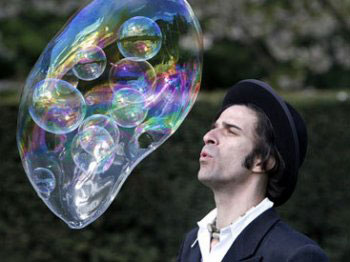 Everyone has his own, even not very high, but his personal record he tries to break during all his life. Some people manage to do that, for others it remains an unachievable aim. Many watch companies, presenting excellent and complicated wrist watches to sophisticated connoisseurs, also strive for being the first, even in the most insignificant things: one watch company creates the most water-resistant wrist watch, another one – the most shock-proof, the third one, for example - the most complicated. No doubt, record watches become one of the most outstanding pages in the history of company and a source of special pride. The wrist watches of some famous watch brands took an active part in the most significant discoveries for humanity. However, before we start talking about watch records directly, let’s try to understand where first various records come from. Almost everyone who has set some record, even the most ridiculous one, tries to enter the pages of the most famous printed edition – legendary Guinness Book of Records. Everyone has his own, even not very high, but his personal record he tries to break during all his life. Some people manage to do that, for others it remains an unachievable aim. Many watch companies, presenting excellent and complicated wrist watches to sophisticated connoisseurs, also strive for being the first, even in the most insignificant things: one watch company creates the most water-resistant wrist watch, another one – the most shock-proof, the third one, for example - the most complicated. No doubt, record watches become one of the most outstanding pages in the history of company and a source of special pride. The wrist watches of some famous watch brands took an active part in the most significant discoveries for humanity. However, before we start talking about watch records directly, let’s try to understand where first various records come from. Almost everyone who has set some record, even the most ridiculous one, tries to enter the pages of the most famous printed edition – legendary Guinness Book of Records.
From pelican to the tallest man in the world
This book originates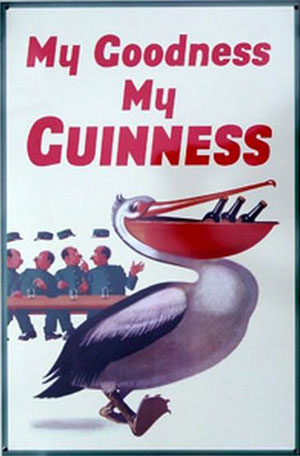 in far 1759, when Arthur Guinness opened his first brew house in Dublin, although thousands of copies of that book were published in London in only 1955. Yes, everything started from mere beer! In 1930 the company of Guinness already owned two brewery works in Great Britain, and the posters “Guinness for Strength” became one of the most effective ways for attraction of that “hopped” drink fans to the pubs of Guinness. It could seem strange, but the first advertizing image of Guinness wasn’t a usual mug of beer or even a passionate fan of that drink, swallowing it from a huge mug, but a usual pelican, holding seven mugs of beer in his beak (they still couldn’t do without mugs). This legendary pelican is the first bird of beer advertisement. An ostrich with a beer glass, stuck in his throat, followed the pelican. But the “bird” theme wasn’t finished with that. At one of dinner parties the director of the company Hugh Beaver took to bickering with inveterate hunters, proving that golden plover is the fastest bird in Europe. The winner was never defined in that discussion. After 3 years at another rout the same discussion on who was faster – plover or grouse – revived. As a result Hugh offered an idea to hold various discussions in pubs. Therefore, those who had patents on alcohol sale had to acquire a book, containing answers to all questions. Then an underbrewer of the company “Guinness Park Royal” Chris Chataway, who was an ex-record holder in athletics, came to help. He recommended the twins Norris and Ross McWhirter, who were perfectly appropriate for preparing such difficult edition and whom he had met through competitions. The brothers were members of Oxford University team and competed in sprint, and later they established their own information agency on Fleet Street. The whole process of collecting different information about sport achievements, about animals and people, about technical inventions, nature cataclysms and curious things took the brothers about a year of hard work. And in 1955, on 27th of August, the first 198-paged edition of Guinness Book was born. The first book was named “Superlative Book. About highest and lowest, biggest, smallest, fastest, oldest, newest, loudest, hottest, coldest, strongest”. The first record, devoted purely to man abilities, was a record of highest European man, set by William Bradley from England (his height made up 7 feet and 9 inches). For comparison: the tallest European man, Kristopher Griner, living today, is 7 feet 6,25 inches. Literally in several months the Guinness Book of Records became a bestseller in Britain and was swept away from counters, and in November 1974 it had its own place among Guinness’ records: 23,9 million copies of the book were sold. In 1997 that number increased to 75 million – only the Bible had a greater edition. Today the Guinness Book of Records is a specific independent industry. There are committees in different countries, especially authorized to register new records and issue special diplomas. in far 1759, when Arthur Guinness opened his first brew house in Dublin, although thousands of copies of that book were published in London in only 1955. Yes, everything started from mere beer! In 1930 the company of Guinness already owned two brewery works in Great Britain, and the posters “Guinness for Strength” became one of the most effective ways for attraction of that “hopped” drink fans to the pubs of Guinness. It could seem strange, but the first advertizing image of Guinness wasn’t a usual mug of beer or even a passionate fan of that drink, swallowing it from a huge mug, but a usual pelican, holding seven mugs of beer in his beak (they still couldn’t do without mugs). This legendary pelican is the first bird of beer advertisement. An ostrich with a beer glass, stuck in his throat, followed the pelican. But the “bird” theme wasn’t finished with that. At one of dinner parties the director of the company Hugh Beaver took to bickering with inveterate hunters, proving that golden plover is the fastest bird in Europe. The winner was never defined in that discussion. After 3 years at another rout the same discussion on who was faster – plover or grouse – revived. As a result Hugh offered an idea to hold various discussions in pubs. Therefore, those who had patents on alcohol sale had to acquire a book, containing answers to all questions. Then an underbrewer of the company “Guinness Park Royal” Chris Chataway, who was an ex-record holder in athletics, came to help. He recommended the twins Norris and Ross McWhirter, who were perfectly appropriate for preparing such difficult edition and whom he had met through competitions. The brothers were members of Oxford University team and competed in sprint, and later they established their own information agency on Fleet Street. The whole process of collecting different information about sport achievements, about animals and people, about technical inventions, nature cataclysms and curious things took the brothers about a year of hard work. And in 1955, on 27th of August, the first 198-paged edition of Guinness Book was born. The first book was named “Superlative Book. About highest and lowest, biggest, smallest, fastest, oldest, newest, loudest, hottest, coldest, strongest”. The first record, devoted purely to man abilities, was a record of highest European man, set by William Bradley from England (his height made up 7 feet and 9 inches). For comparison: the tallest European man, Kristopher Griner, living today, is 7 feet 6,25 inches. Literally in several months the Guinness Book of Records became a bestseller in Britain and was swept away from counters, and in November 1974 it had its own place among Guinness’ records: 23,9 million copies of the book were sold. In 1997 that number increased to 75 million – only the Bible had a greater edition. Today the Guinness Book of Records is a specific independent industry. There are committees in different countries, especially authorized to register new records and issue special diplomas.
Most ridiculous records!
 All records are broken today, the titles of the best and the most are received. People make various cranky steps to leave their trace in this famous book that fascinates and makes doing the most incredible things. To understand immensity of their craziness and inexhaustible fantasy for different new achievements, it’s enough to provide some examples of strangest records. For example, a 9-year-old boy from Great Britain fixed and, more important, held the greatest number of spoons on his face. It happened on the 1st of April, 2008, in the world Fool’s Day. Joe somehow held 16 spoons – 5 on his forehead, 4 – on his cheeks, 1 – on his nose, 2 – on his lips, 1 – per each ear and 2 – on his chin. The quickest escapement from a suitcase takes Leslie Tipton only 7,04 seconds. The most lasting speech was given by Lewis Collette, who set a world record twice. First time, in 2004, Collette spoke nonstop during 48 hours. But the citizen of Indian conquered the palm of victory, speaking for 120 hours and, therefore, setting a new record. Soon Collette decided to return his title of most talkative man on the Earth and made a new record: his senseless speech lasted for 124 hours. Christian Adam from German city of Lubeck also drew attention. At the age of four he learned riding a bike (as many other boys at this age), but later he started playing violin. He loved those two occupations so much that once a strange idea crossed his mind – to combine them. And he started playing violin, moving by bike in reverse. His record – 60 kilometers for 5 hours. The things people do to get their minute of glory, which is also confirmed by a diploma!!! All records are broken today, the titles of the best and the most are received. People make various cranky steps to leave their trace in this famous book that fascinates and makes doing the most incredible things. To understand immensity of their craziness and inexhaustible fantasy for different new achievements, it’s enough to provide some examples of strangest records. For example, a 9-year-old boy from Great Britain fixed and, more important, held the greatest number of spoons on his face. It happened on the 1st of April, 2008, in the world Fool’s Day. Joe somehow held 16 spoons – 5 on his forehead, 4 – on his cheeks, 1 – on his nose, 2 – on his lips, 1 – per each ear and 2 – on his chin. The quickest escapement from a suitcase takes Leslie Tipton only 7,04 seconds. The most lasting speech was given by Lewis Collette, who set a world record twice. First time, in 2004, Collette spoke nonstop during 48 hours. But the citizen of Indian conquered the palm of victory, speaking for 120 hours and, therefore, setting a new record. Soon Collette decided to return his title of most talkative man on the Earth and made a new record: his senseless speech lasted for 124 hours. Christian Adam from German city of Lubeck also drew attention. At the age of four he learned riding a bike (as many other boys at this age), but later he started playing violin. He loved those two occupations so much that once a strange idea crossed his mind – to combine them. And he started playing violin, moving by bike in reverse. His record – 60 kilometers for 5 hours. The things people do to get their minute of glory, which is also confirmed by a diploma!!!
However, not only people strive for breaking any record. Many manufacturers of different goods, culinary establishments, and also famous watch companies, and those who want to become famous through the records, wish to create something most unusual, biggest, in a word, the very and the best. For example, the largest English breakfast in the world is served in Mario cafe in Bolton. The meal includes 10 sausages, 10 eggs, 10 bacons, 5 blood sausages, heaps of beans, mushrooms and tomatoes. And recently, on the 2nd of July, 2011, the biggest burger in the world was prepared: it weighed totally 350 kg that is 90 kg more than its forerunner.
The most and the very…
Different watch companies are listed in the Guinness Book of Records. Now let’s see what records they’ve made and what companies are the best ones!
The whole watch history started in 725 in China, when Yi Xing and Liang Lingzan invented the first mechanical clock with anchor. As for the most ancient clock in the world, reserved till our days, it is situated in the British cathedral in Salisbury. This construction has no dial and dates back to 1386, at that the clock is still functioning. The clock was restored in 1956, and until that time it served hand and foot for citizens, ticking over half a billion times.
The mobile chronometer, made of iron in about 1504 by Peter Henlein in German city of Nurnberg, is recognized to be the most ancient pocket watch. But the first lot of wrist watches was produced in Geneva (Switzerland) in 1790 by the company “Jacquet-Droz and Leschet”.
The most accurate mechanical watch, named “Olsen”, was created especially for Copenhagen city hall, the capital of Denmark, in December of 1955. That watch took the masters over 10 years and required over 14 thousand details. The watch components work in 570 thousand different modes. For example, the full circle of the world pole will finish in 25 753 years, it means that this watch is the slowest one in the world at the same time. Its error equals to 0,5 seconds per 300 years that is half a hundred times more accurate than the record set before.
The most accurate chronometer is a microwave quantum generator or atomic hydrogen doubled Mauser, installed in 1964 in the Research Laboratory of US Navy (Washington, D.C.) They are based on the frequency of hydrogen atom quartal jump – 1 420 450 751 694 jumps that guarantees accuracy within a second during 1 million 700 thousand years.
As for the smallest watch, the Swiss watch company “Jaeger LeCoultre” is a record-holder. All cases and movements make up only 7 grams and 1,2 cm in length and 0,47 cm in width with 15 jewels. The watch “Concord Delirium 4” with golden bracelet is considered to be the flattest one. Its thickness makes up only 0,98 mm. In 1980 you buy that watch for retail price of only 16 thousand dollars, including the bracelet.
The record sum of 16 004 392 pounds sterling for a wrist watch (“Caliber 89” of Patek Philippe) from Swiss company “Habsburg Feldman” was paid by unknown buyer from South America. This luxurious watch consists of 1728 details. If not considering watch cases, encrusted with jewels, the most expensive men watch “Heaven at hand”, famous among collectors under the name “Packard”, was created by the same company “Patek Philippe” for an automobile magnate James Packard in 1922. He was so demanding that the watchmakers had to recreate an astronomic map on enamel dial in golden case, which demonstrated the celestial bodies above Warren city, Ohio (USA) – the native place of the businessman, just the way he would seen them from the window of his house. That record was broken in 1993, when Patek Philippe created a complicated (24 functions) pocket watch for a banker Henry Graves, which was sold for $11,000,000 in 1999 after his death. It was the highest price for a watch that was listed in the Guinness Book of Records. Today the most expensive chronometer is the wrist watch from Chopard, completely spangled with diamonds.
An astronomic clock in St Peter’s cathedral, Beauvais, France, constructed in 1865…1868, consisting of 90 thousand details, is the biggest one; its height is 12,1 m, the width – 6,09 m, the depth – 2,7 m.
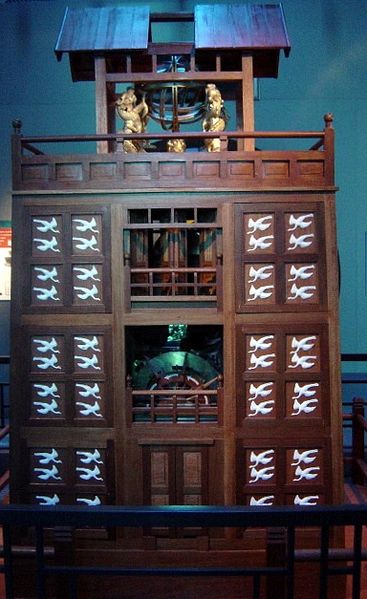 An enormous clock “Su Song” was constructed in Kaifeng, China, in 1088…1092 and equipped with 20,3-ton bronze armillary sphere for 1,52 tones of water. In 1126 it was transported to Beijing and set on 12,1 m height tower. According to historic resources, it was working until 1136. An enormous clock “Su Song” was constructed in Kaifeng, China, in 1088…1092 and equipped with 20,3-ton bronze armillary sphere for 1,52 tones of water. In 1126 it was transported to Beijing and set on 12,1 m height tower. According to historic resources, it was working until 1136.
The sizes of next big clock, set in atrium, make up 15,54 x 15,54 x 15,54 m. It takes 5 floors of the building “International Square” in Washington, USA, in its height. It is run through a computer and moves 1/100 s of accuracy. Its weight makes up 2 tons. This giant construction is lighted up with the help of 122 m of neon tubes, the installation of which required 460 m of cables and wires. 12 light tubes at the base of movement inform hours and minutes. Created by a sculptor John Seyfer, it also indicates the meridian Solar time in 12 cities of the world.
The flower clock, installed in “Rose Building” in Japanese city of Hokkaido, has the biggest dial in the world of 21 m in diameter. That giant dial was constructed by Seiko for the company “Core Fudziso” and installed in June, 1988. The length of big hand makes up 8,5 m. And the biggest clock with 4 dials is set on the building of the company “Allen Bradley” in Milwaukee, Wisconsin, USA. The diameter of each dial is 12,28 m, the length of minute hand is 6,09 m.
And the most high-mounted clock with 4 dials is set on the building of the bank “Williamsburgh Savings” in Brooklyn, New Work, USA. It is situated at height of 131 m. The digital electronic clock of 13,4 õ 13,4 õ 8,5 m size rotates on the roof of “Texas-building” in American town of Fort Worth, Texas.
Our list has also included the famous around the world tower clock “Big Ben”, situated on the tower of English House of Commons. The most prolonged stop of its movement since it had been started on the 31st of May, 1859, lasted 13 days: from the noon of April 4 to the noon of April 17, 1977. And in 1945 a flock of usual starlings slowed down the minute hand of Big Ben for 5 long minutes.
The Japanese capital is a Jack of all records. The company “Hattori Tokeiten” set the longest pendulum in the world in the watch on “Shinjuku NS Building” there indeed. Its length makes up 22,5 m and it was installed in 1983.
The biggest wrist watch “Swatch”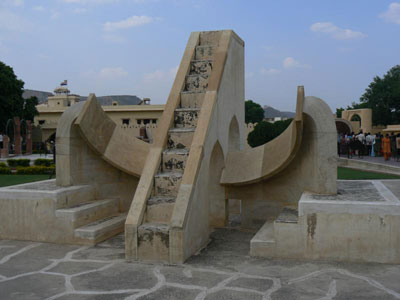 was made by D.Thomas Feliu. Its length made up 162 m, and the diameter – 20 m. Such giant sizes for a wrist watch were chosen not by chance: it was mounted on the building of the bank “Bilbao” in Spanish capital, Madrid, in December 7-12, 1985. The watch ETA, mounted on the Swiss pavilion EXPO-86 in May-October of 1986 in Vancouver, Canada, weighed 35 tones and made up 24,3 m in height! was made by D.Thomas Feliu. Its length made up 162 m, and the diameter – 20 m. Such giant sizes for a wrist watch were chosen not by chance: it was mounted on the building of the bank “Bilbao” in Spanish capital, Madrid, in December 7-12, 1985. The watch ETA, mounted on the Swiss pavilion EXPO-86 in May-October of 1986 in Vancouver, Canada, weighed 35 tones and made up 24,3 m in height!
The most complicated watch, listed in the Guinness Book of Records in 1989, is the wrist watch “Astrolabium Galileo Galilei” from the legendary watch company “Ulysse Nardin”. This complicated model of astronomic watch is able to show the local and Solar time of celestial orbit, Lunar and Solar eclipses, and positions of some stars. The watch also shows the times of sunrise and sunset, predawn and evening twilight, moonrise and moonset, also the Lunar phases, the month and the weekday.
The biggest Solar clock is “Samrat Yantra”, 27 m of gnomon length and 36 m of height. It was constructed in 1724 in Jaipur, India. We finish our list by the biggest watch collection, which belongs to Shoff from USA, who collected 1094 timepieces.
In the new millennium many of these records, probably, will be broken. Different watch companies won’t stop surprising with their complicated and most extraordinary design decisions. However, a watch company or someone else doesn’t have to show off at the pages of Guinness Book of Records: a small record for yourself will be enough. We only have to wait, keeping an eye on deciduous time at our reliable chronometers!!!
Wrist watch Rolex – element conquest!!!
.jpg) The Swiss watch company “Rolex” is famous around the world not only for its status chronographs, but also for many records. And it’s not by chance, as Rolex originates in 1915 and its talented founder, Hans Wilsdorf, applied various methods to glorify Rolex wrist watches all over the world. So, how did everything start? The Swiss watch company “Rolex” is famous around the world not only for its status chronographs, but also for many records. And it’s not by chance, as Rolex originates in 1915 and its talented founder, Hans Wilsdorf, applied various methods to glorify Rolex wrist watches all over the world. So, how did everything start?
In 1926 the watch company “Rolex” created the first water-resistant watch “Oyster” in the world. The reliable watch movement was set in ultradurable case and provided with water-proof crown. In 1927 a young Swiss swimmer Mercedes Gleitze crossed La Manche with the watch “Oyster” on her wrist in 15 hours 15 minutes.
Hans Wilsdorf spent 40 thousand francs on hourly informing of audience about the swimmer’s health and the time during the race. The photos of smiling swimmer were titled: “Great triumph of Rolex Oyster”. As a result of legendary race the wrist watches of Rolex took leading positions at the watch market, and Rolex Oyster was literally swept away from counters. So, the water element and the hearts of millions of potential customers were won. Oyster became an irreplaceable companion of seamen.
In 1950 the company “Rolex” started testing the first prototypes of watch “Deep Sea Special” at different depths. Already in August of 1953 the first record on the watch diving was set: the wrist watch dived to the depth of 1080 meters for the first time in the history and returned in good order. Later, after several years, a new record was set – at 3150 meters depth. But the company “Rolex” didn’t stop: in 1956 it descended the watch at 3700 meters that seemed unreal before. The test ended with great success. The record of deepest wrist watch dive was broken.
Based on the experience of two first tested models, the world brand Rolex designed the third model of wrist watch, named “Deep Sea Special”, which acquired reputation of ultrastrong time meter. That model made its record dive: the watch together with the bathyscaph Trieste was at one of the deepest spots of the world, named “Challenger Deep” – the deepest spot of Mariana Trench. It wasn’t just a record for the Rolex watch, it was one of the most significant discoveries of all .jpg) humanity, resulted in reviewing of the whole underwater world. This “deep” makes up 10 916 meters. The watch came back perfectly safe without any damages. To imagine what a grueling time the Rolex watch had, it’s enough to provide the fact that the pressure at the bottom of Mariana Trench reaches 108,6 MPa – it’s 1100 times more than the usual atmosphere pressure! The case of wrist watch “Rolex Deep Sea” was especially designed by the company’s specialists. This construction is distinguished by its high complexity, provided with three components and named “Ring Lock”. An ultrastrong ring from nitrous stainless steel is put inside the case. This supporting skeleton endures ultrahigh pressure that can crush even a deep-sea vehicle. The dial of 5 mm thickness from sapphire glass bears the pressure of 3-tone load. Approximately the same pressure is created by a water gauge of 3900 m height. The water-proof back case from titanium of fifth degree protects the movement. That legendary submergence was performed in January 23, 1960 by the American bathyscaphe Trieste. That famous bathyscaphe was designed by a Swiss scientist Auguste Piccard and was named after the Italian city of Trieste, where it was designed. That fantastically risky submergence was commanded by an American lieutenant of Naval Forces Don Walsh and famous oceanologist Jacques Piccard. That dive became a real breakthrough in modern science and techniques. From 10 916 meters the bathyscaph emerged completely safe as well as the watch “Rolex Deep Sea Special”, fixed to the body of that submarine. That experiment made Rolex the most durable watch in the world. So the record of the deepest submergence of a wrist watch was broken. humanity, resulted in reviewing of the whole underwater world. This “deep” makes up 10 916 meters. The watch came back perfectly safe without any damages. To imagine what a grueling time the Rolex watch had, it’s enough to provide the fact that the pressure at the bottom of Mariana Trench reaches 108,6 MPa – it’s 1100 times more than the usual atmosphere pressure! The case of wrist watch “Rolex Deep Sea” was especially designed by the company’s specialists. This construction is distinguished by its high complexity, provided with three components and named “Ring Lock”. An ultrastrong ring from nitrous stainless steel is put inside the case. This supporting skeleton endures ultrahigh pressure that can crush even a deep-sea vehicle. The dial of 5 mm thickness from sapphire glass bears the pressure of 3-tone load. Approximately the same pressure is created by a water gauge of 3900 m height. The water-proof back case from titanium of fifth degree protects the movement. That legendary submergence was performed in January 23, 1960 by the American bathyscaphe Trieste. That famous bathyscaphe was designed by a Swiss scientist Auguste Piccard and was named after the Italian city of Trieste, where it was designed. That fantastically risky submergence was commanded by an American lieutenant of Naval Forces Don Walsh and famous oceanologist Jacques Piccard. That dive became a real breakthrough in modern science and techniques. From 10 916 meters the bathyscaph emerged completely safe as well as the watch “Rolex Deep Sea Special”, fixed to the body of that submarine. That experiment made Rolex the most durable watch in the world. So the record of the deepest submergence of a wrist watch was broken.
Conquering ocean depths, the watch company “Rolex” turned to mountain peaks. And, of course, it started with the highest point of our planet – mountain Everest. Everest was first conquered by the New Zealand explorers Edmund Hillary and Tenzing Norgay on the 29th of May, 1953. Man stepped at 8848 meters above the sea for the first time. And the wrist watch from Rolex became the first chronometer that showed the time at such height. Role presented its wrist watch “Explorer” in honor of that historical event. Created for conquerors of “peaks”, the watch “Oyster Perpetual Explorer” keeps the traditions, established by that “Explorer”, and unique historic heritage.
Once an alpinist was asked: “Why do you strive for climbing Everest so much?”, and he answered: “Everything happens right here”. This phrase completely characterizes the legendary watch company “Rolex” indeed: everything happens right here!!!
Wrist watches Longines – watches of pathfinders!
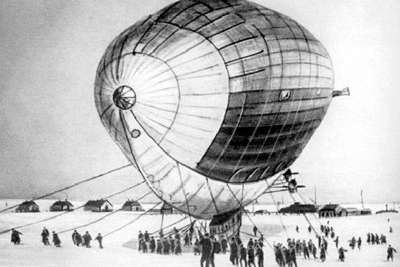 The famous Swiss The famous Swiss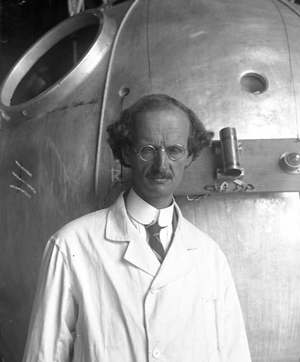 watch company “Longines” was founded in far 1832 by Auguste Agasiz. Through its 2-centuried history the company managed to conquer North and South poles together with Joseph-Elzéar Bernier and Roald Amundsen, to hop the Atlantic together with Lindbergh, to open the first modern Olympic games, to dive into mysterious depths of Mariana Trench together with the professor Auguste Piccard and to wrap up a historical truce in one of the longest confrontation of the century, together with Reagan and Gorbachev. Now let’s make it clear! watch company “Longines” was founded in far 1832 by Auguste Agasiz. Through its 2-centuried history the company managed to conquer North and South poles together with Joseph-Elzéar Bernier and Roald Amundsen, to hop the Atlantic together with Lindbergh, to open the first modern Olympic games, to dive into mysterious depths of Mariana Trench together with the professor Auguste Piccard and to wrap up a historical truce in one of the longest confrontation of the century, together with Reagan and Gorbachev. Now let’s make it clear!
The end of 19th century. The government of Canada became a sponsor of the national expedition to North Pole, aimed at roots exploration. Thereto, a German sheep “Arctic” was acquired, and an experienced seaman Joseph-Elzéar Bernier was appointed the captain of the vessel. Already in 1906 the expedition left Quebec and bore up north. The North Pole was reached already in a year. 429 days! That time was enough to reach the cherished goal. During the expedition the crew used two marine chronometers “Longines Express Monarch” as the main navigators. Bernier wrote that one of the devices had been 13 seconds slow, another one – 4 seconds. Minus only 4 seconds for 429 days in 1906! So the first record of Longines was broken; by the way, thanks to that company Canada acquired the property right for Arctic Islands of totally 740 thousand square kilometers and became one of the main figures in the world of navigation.
Soon the watch company “Longines” started conquering North and South poles. The first man, who conquered North pole, was a Norwegian polar traveler and explorer Roald Amundsen (16th of July, 1872 – 1928). In his legendary expedition to South pole in 1911 Roald Amundsen took the wrist watch “Longines Navigation Chronograph”, which was especially designed by the company in 1889 for low temperatures. Already in 1926, full of pathfinder’s spirit, the Norwegian Ruald Amundsen, equipped with the wrist chronograph from Longines, made his non-stop flight of 2000 kilometers above North Pole on the airship “Norge”. The exploration of dangerous and unknown places on the Earth in the XX century became one of the favorite occupations of the watch company “Longines”.
One of the most notable record pages of the wrist watches became an expedition of a Swiss scientists-explorer Auguste Piccard. The first half of the Swiss physician’s career was devoted to conquest of stratosphere on a tight airship, designed by himself. In 1931, 27th of May, Auguste with his assistant Kipfer towered 15 787 meters from Augsburg (Bavaria) on a stratosphere hydrogen balloon with airtight aluminum nacelle. It was the first stratosphere flight in the history of humanity. After the Second World War he was reinstated in the position of professor of physics he had held in the University of Brussels in prewar years. There he led the engine development project for studying ocean depths. In 1948 Auguste Piccard designed a bathyscaph (in Greek “bathus” – deep, “skaphe” – vessel) and tried to submerge in a deep trench near the Cape Verde Islands. In 1950s Piccard took the lead of new submersible construction, financed by Italy and Switzerland. That new bathyscaphe was named Trieste in honor of Italian city, where the difficult project was realized. In summer of 1953 with the cooperation of the Italian Navy the first tests at the cost of Italy were carried out. The cabin of Trieste was equipped with various installations, including high-accurate counters of Longines. With the help of that equipment Auguste with his son Jacques Piccard submerged at a test depth of over 1000 meters. On 30th of September, 1953, Trieste conquered the depth of 3050 meters near Ponza Island. After that dive the professor’s son took the lead of bathyscaphe.
The far years of 1920s were marked.jpg) by many attempts of air element conquest, which required the most accurate time meters. And it’s quite natural that the watch company “Longines” became an official supplier of chronometers for International Aviation Federation (IAF) from 1919. The “sky pioneers” used the watches of Longines and various accurate devices of the same brand in their expeditions. For example, in 1925 a wrist watch from Longines accompanied Locatelli in his flight to North Pole, and in 1926 it travelled from Switzerland to Iran with Mittelholzer. But just the expedition of Charles Lindbergh became the main human and technical achievement and locomotive power of Longines striking success: the watch company became famous all over the world. In 1929 Lindbergh made the first non-stop flight at his aircraft “Spirit of St. Louis” over the North Atlantic – from New York to Paris. The time of his triumph flight, 33 hours 30 minutes, was officially confirmed by International Aviation Federation and measured by the Longines devices. Consequently the high-accurate devices of Longines became an integral part of many pilots’ equipment in air explorations. by many attempts of air element conquest, which required the most accurate time meters. And it’s quite natural that the watch company “Longines” became an official supplier of chronometers for International Aviation Federation (IAF) from 1919. The “sky pioneers” used the watches of Longines and various accurate devices of the same brand in their expeditions. For example, in 1925 a wrist watch from Longines accompanied Locatelli in his flight to North Pole, and in 1926 it travelled from Switzerland to Iran with Mittelholzer. But just the expedition of Charles Lindbergh became the main human and technical achievement and locomotive power of Longines striking success: the watch company became famous all over the world. In 1929 Lindbergh made the first non-stop flight at his aircraft “Spirit of St. Louis” over the North Atlantic – from New York to Paris. The time of his triumph flight, 33 hours 30 minutes, was officially confirmed by International Aviation Federation and measured by the Longines devices. Consequently the high-accurate devices of Longines became an integral part of many pilots’ equipment in air explorations.
.jpg) The famous brand also took part at the Antarctic expedition, headed by the admiral Byrd. That time the wrist watches of Longines conquered South Pole in 1929. The famous brand also took part at the Antarctic expedition, headed by the admiral Byrd. That time the wrist watches of Longines conquered South Pole in 1929.
In 1932 a wrist watch from Longines became a faithful companion for the first woman-pilot Amelia Earhart, who flew from Newfoundland to Ireland.
The high-accurate devices and watches of famous brand “Longines” were also on board of well-known airship “Graf Zeppelin”, made round-the-world air trip, headed by the captain Hans von Schiller. In 1938 Howard Hughes broke the speed record of round-the-world trip, having flown around the world in less than four days with the Longines chronographs on board.
Besides all these significant records, the famous watch company “Longines” can be safely named a record-holder among watch brands in number of awards. The wrist watches from Longines won 28 gold medals and 10 Grand Prix. The first big prize was received by Longines in 1885 at the World exhibition in Antwerp, and after 2 years, in 1987, the wrist watches of Longines got the Grand Prix in Brussels, as well as at the exhibitions in Paris in 1889, 1900, 1925; in Milan in 1906; in Genoa and Bern in 1914. They won “American success” and Grand Prix in Philadelphia in 1926, and in Barcelona in 1929. During only 20 years, from 1879, when the watch manufactory Longines became a mandatory participant in various competitions, it received 400 awards from the observatory of Neuchatel. In 1945 it also got a prize for the record in wrist watch accuracy. In 60s of the XX century the Swiss watches of Longines became a four-time winner of “Diamond Award” in the field of jewelries. In 1964, Longines deserved Medal of Honor of Lausanne. In 1970s the company became a four-time winner of prestigious German prize “Golden Rose of Baden-Baden”.
However, apart from all aforementioned records, the watch company “Longines” broke its own record: in 1960 the company presented the thinnest quartz watch in the world of 2 mm, and in 1979 it even improved and made a 1,98-mm thick watch!!!
No doubt, Longines wrist watches can be called pioneers in various fields, since they accompanied almost all pathfinders of the world, helping them to obtain new breakthroughs. The perfect chronometers of Longines are registered to have made the greatest number of records!!!
Wrist watch “20 000 Feet by CX Swiss Military Watch” – destroying existing limits!!!
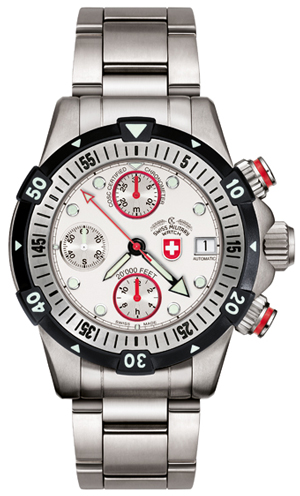 The history of the watch company “CHARMEX” dates back in far 1926. Max Burgin, a true watchmaker, who founded horlogerie in Switzerland together with other Swiss famous brands, started his career just in that time. The true connoisseurs of horlogerie know about the high-quality watches of CHARMEX, distinguished by their records, firsthand. The history of the watch company “CHARMEX” dates back in far 1926. Max Burgin, a true watchmaker, who founded horlogerie in Switzerland together with other Swiss famous brands, started his career just in that time. The true connoisseurs of horlogerie know about the high-quality watches of CHARMEX, distinguished by their records, firsthand.
Setting the world record of water-resistance at great depths in 2005 with the model “12 000 Feet by CX Swiss Military Watch”, the watch company “CHARMEX” didn’t stop. The watchmakers of the company, headed by Franc Burgin, set a new goal: to break their own record and the record of Rolex at 3900 meters by the model “Seadweller Deep Sea”. So, the first record watch from CHARMEX appeared – the first mechanical watch-chronograph of 20 000 feet water resistance in the world!!!
Thanks to that record figure indeed the wrist mechanical watch has been listed in one of the most famous editions – the Guinness Book of Records. The record wrist watch “20000 FEET” isn’t afraid of any severe testes under water and can work in any conditions. However, to create such amazing chronometer, first they had to establish conditions, corresponding to deep sea. So, at the beginning a chamber, creating the water pressure of up to 800 bars that would correspond to the pressure at 8 000 m depth, was required. That became a serious problem for the start. Soon the team of talented engineers started a complicated design of future record-holder. It might endure the water pressure equal to 750 kg/sq.cm. After much estimation an original virtual model was created, and then a manufacture sample followed. Months of hard creative work were required for decision of such technical problems as fixing a massive 10-milimeter dome-shaped sapphire glass to a titanium case. By the end of 2008 the development types, which took part in main tests, had been created. The crown, chronograph buttons and buckle underwent statistic and dynamic pressure tests in the laboratory “Dubois” of Swiss town of La Chaux-de-Fonds. Then the development types were tested at Oceanographic Institute of the University of Southampton, Great Britain. The development types were tested for the water-resistance of 6 000 meters in pressure chambers of that laboratory. And the result – 25 000 feet – conformed to the International Standard Organization (ISO) 6425: 20 000 feet and 25% margin of safety.
Also that chronograph was put through such “terrible” tests as Winchester shooting at distance of only 8 meters; air-blast, equal to 5 000 m/sec; and even water flooding – 6 000 liters/min. The conclusion is the following: the wrist watch “20’000 FEET” kept on going as if nothing had happened. There is only one test left for the fall: after a jump from an airplane at 20 000 feet height, a parachutist will have to throw the watch when he will be at about 1500 m above the sea level. Yes, the watch “20’000 FEET” will have a tough time. But the self-confident creators of this immortal chronograph keep on putting their offspring through various “tortures”. They even organized an action: the person, who will propose the most original idea for the watch testing, will be awarded with one of exclusive chronometers. So those, who want to try, should hurry up to show off their originality and get this exclusive chronograph, as there are only 1000 pieces manufactured.
So, if you’ve decided to take part in this action, I’ll tell you shortly about some technical characteristics of your future wrist watches! The 46-mm case with helium valve is made of titanium and weighs only 265 grams. The anti-magnetic features of the watch meet ISO 764. The 48-hour power reserve is provided by an automatic movement of caliber ETA 7750 Valjoux on 25 jewels and with balance frequency of 28 800 alterations/hour. Despite its sizes, the wrist watch “20’000 FEET” is quite ergonomic and will be perfect on your wrist. It’s a real boon for professional divers, who will be astonished at endurance of their companion.
However, the watch company is intended to continue running for higher achievements. One of such altruistic aims is environment protection. With the view to reservation of most biological variety, the company has decided to make a financial donation for support and protection of wonderful African national park in Zimbabwe. A significant part of 20’000 FEET sales will be transferred to “The Friends of Hwange Foundation”, which is only intended for the park reservation and development. The environment protection became one of the main aims of the company, which constantly attracts its clients for they personally experience the nature generosity. The issue of that model put the watch company “Montres Charmex SA” ahead of its competitors for many years.
Wrist watch “Omega”: “We choose to go to the Moon…”
Omega is the last letter of the Greek alphabet, and a symbol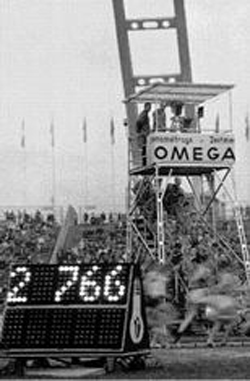 of logical conclusion and perfection. Founded in far 1848 in Swiss town of La Chaux-de-Fonds by a skillful watchmaker Louis Brandt, the watch company "Louis Brandt & Fills", later renamed "Omega" - the most popular model of wrist watches, is a standard of advanced technologies and perfect design. Louis Brandt made a good choice of the name: his wrist watches were destined to become ones of the most perfect chronometers. The wrist watch "Omega", in spite of its rather low price, managed to win two-thirds of all Swiss chronometer certificates. of logical conclusion and perfection. Founded in far 1848 in Swiss town of La Chaux-de-Fonds by a skillful watchmaker Louis Brandt, the watch company "Louis Brandt & Fills", later renamed "Omega" - the most popular model of wrist watches, is a standard of advanced technologies and perfect design. Louis Brandt made a good choice of the name: his wrist watches were destined to become ones of the most perfect chronometers. The wrist watch "Omega", in spite of its rather low price, managed to win two-thirds of all Swiss chronometer certificates.
We can talk about privileges of Omega wrist watch endlessly. Through all its history the brand made many records and discoveries. Now in more details.
The main prove of its perfect design is, perhaps, its excellent, even fantastic accuracy. It's far from being a marketing ploy. The record, set in 1936 that no one watch manufactory haven't broken yet, is an outstanding prove. The Swiss Kew-Teddington observatory arranges annual competitions of various chronometers. So, the watch company “Omega” managed to get 97,8 points out of 100, confirming its perfection once and for all. However, it should be noted that the watch company “Omega” won various awards for accuracy many time in far 1880s and 1890s. A special accent on accuracy, value and quality of Omega watches was put at the first advertisement of the XIX century. Besides, the watches of Omega won 92 more competitions for movement accuracy, organized by observatories in Neuchatel, Geneva and Kew-Teddington.
The next important event in the history of company is being an official time-keeper at the Olympic Games. In 1932, the Olympic Games, fully time-kept for the first time, took place in Los Angeles. And as you’ve guessed, just Omega got an honorary title of the first official time-keeper of the Olympic Games. That became the start of long-term collaboration between Omega and International Olympic Committee.
.jpg) The conquest of our illimitable Universe became one of the most outstanding pages in the history of Omega. The wrist watches from Omega adorn cosmonauts’ wrists more often that other watch companies. Let’s speak about these important events in the history of humanity. In 1957 the company created its legendary chronograph “Omega Speedmaster”. On 25th of May, 1961, the program of first Moon landing, powered by the American president John F. Kennedy, was launched. “I believe that this nation should commit itself to achieving the goal, before this decade is out, of landing a man on the moon and returning him safely to the earth. No single space project in this period will be more impressive to mankind, or more important for the long-range exploration of space; and none will be so difficult or expensive to accomplish” – from Kennedy’s Special Message to the Congress on Urgent National Needs. The Apollo program became an incitement to whole range of historical, scientific and engineering achievements. In 1964, two young clients with short hair-cuts and straight backs visited the best watch shop in Huston and simply astonished the owner by purchasing about 10 wrist watches of different brands. The wrist watch “Omega Speedmaster” for only 82,5 dollars in a sale was among them. It’s really difficult to imagine that a “cosmic watch” of excellent characteristics had such price!!! Those two young men appeared to be NASA experts, seeking for a perfect chronometer for the legendary program of Moon landing – Apollo. The “perfect chronometer” for the expedition might endure weightlessness, vacuum, high electromagnetic radiation and sudden temperature drops. In 1965, the model “Omega Speedmaster” along with watches of different brands underwent NASA tests in conditions of weightlessness, under the effect of great magnetic field, and also at temperatures from -18 to +93 degrees of Celsius. No wonder only Omega Speedmaster sustained the tests and, therefore, was chosen for Apollo. On July 20, 1969, at 02:56 a.m. GMT, when Neil Armstrong and Buzz Aldrin were the first men to step on the Moon, their wrist watches “Omega Speedmaster” could realize the unique characteristics. The watches returned to the Earth and continued working as if nothing has happened, only their name changed to “Speedmaster Professional”, and the watches obtained a high status of Lunar watches. The conquest of our illimitable Universe became one of the most outstanding pages in the history of Omega. The wrist watches from Omega adorn cosmonauts’ wrists more often that other watch companies. Let’s speak about these important events in the history of humanity. In 1957 the company created its legendary chronograph “Omega Speedmaster”. On 25th of May, 1961, the program of first Moon landing, powered by the American president John F. Kennedy, was launched. “I believe that this nation should commit itself to achieving the goal, before this decade is out, of landing a man on the moon and returning him safely to the earth. No single space project in this period will be more impressive to mankind, or more important for the long-range exploration of space; and none will be so difficult or expensive to accomplish” – from Kennedy’s Special Message to the Congress on Urgent National Needs. The Apollo program became an incitement to whole range of historical, scientific and engineering achievements. In 1964, two young clients with short hair-cuts and straight backs visited the best watch shop in Huston and simply astonished the owner by purchasing about 10 wrist watches of different brands. The wrist watch “Omega Speedmaster” for only 82,5 dollars in a sale was among them. It’s really difficult to imagine that a “cosmic watch” of excellent characteristics had such price!!! Those two young men appeared to be NASA experts, seeking for a perfect chronometer for the legendary program of Moon landing – Apollo. The “perfect chronometer” for the expedition might endure weightlessness, vacuum, high electromagnetic radiation and sudden temperature drops. In 1965, the model “Omega Speedmaster” along with watches of different brands underwent NASA tests in conditions of weightlessness, under the effect of great magnetic field, and also at temperatures from -18 to +93 degrees of Celsius. No wonder only Omega Speedmaster sustained the tests and, therefore, was chosen for Apollo. On July 20, 1969, at 02:56 a.m. GMT, when Neil Armstrong and Buzz Aldrin were the first men to step on the Moon, their wrist watches “Omega Speedmaster” could realize the unique characteristics. The watches returned to the Earth and continued working as if nothing has happened, only their name changed to “Speedmaster Professional”, and the watches obtained a high status of Lunar watches.
The cosmonauts of Apollo-13.jpg) also ought their lives to the wrist watches “Speedmaster Professional”. When the board computer switched off, the crew kept the time of expedition and return to the Earth by the watch “Speedmaster Professional” indeed. A mistake in a second for the engine operation design time could become fatal, but the chronograph helped and saved the lives of three cosmonauts. For that service the watch company “Omega” was given the highest NASA award – “Snoopy”. also ought their lives to the wrist watches “Speedmaster Professional”. When the board computer switched off, the crew kept the time of expedition and return to the Earth by the watch “Speedmaster Professional” indeed. A mistake in a second for the engine operation design time could become fatal, but the chronograph helped and saved the lives of three cosmonauts. For that service the watch company “Omega” was given the highest NASA award – “Snoopy”.
In 1975, July 15, a new project of space exploration – “Soyuz-Apollo” – was launched. The space ship Apollo took off from the territory of the USA, and Soyuz – on 19th – correspondingly from the territory of Soviet Union. That project became important for both space achievements and political decisions. Thereby, an “iron curtain” was a bit lifted: the representatives of rivals made flight together over the near-earth surface, preliminary swopping presents, kisses and handshakes. The wrist watches “Speedmaster Professional” showed off proudly on the wrists of all cosmonauts.
Today the unique chronograph “Speedmaster X-33” is admitted to flights by both NASA and Russian Aviation-Space Agency. It is a part of standard equipment of all astronauts and cosmonauts. The wrist watches “OMEGA Speedmaster Professional” are the only watches in the world, certified for access into space.
In 1970, the company produced an ultra-sealed model “Seamaster 600 ñ” of 600-m water-resistance, used by the captain Jacques Cousteau for studying of psychological and physical state of a man at 500 m depth. Just a matchless quality of high water-resistance was the reason the wrist watch “Seamaster 600” was chosen by the expedition. And it justified the trust of the crew: the watch was still telling the exact time at over 500 m depth.
In 1981 a French swimmer Roland Specker first decided to dive at 80 meter depth at Neuchatel Lake without aqualung. The lake water is much darker and colder that in the ocean, but Specker managed to break his own record. The wrist watch “Omega Seamaster 120 m” served him as a good companion.
Since 1989 the wrist watches “Omega” become an integral part of Soviet cosmonauts’ equipment. In 1993 the company created a chronograph “Seamaster Professional”, which became the first mechanical chronograph for diving at up to 300 meters.
Over 160 years the watch company “Omega” represents a spirit of pathfinder. It has the following records under its belt: six Moon expeditions, the first watch in the world for motorists, the only chronometer in the world, certified as a marine one. No one watch company in the world has broken many records of Omega in accuracy yet. The company managed to become an official time-keeper at the 24th Olympic Games. All these records allow us to be sure that the wrist watches of Omega are perfect chronometers for real professionals.
|


